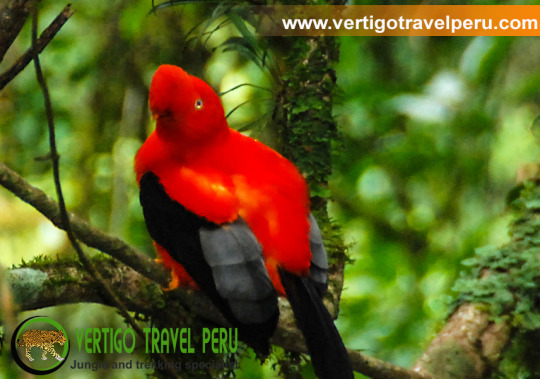Biodiversity in the Manu National Park
- 1025 bird species (55% of the 1800 Peruvian bird species, and 10% of the world’s birds).
- 221 species of mammals (43.5% of all Peruvian fauna), and 5% of the species worldwide (7 species are definitely endemic to the country).
- 150 amphibious species.
- 100 Reptile species
- 210 species Fish
- 1307 species of butterflies (15% of the world total)
- Up to 500 thousand species of invertebrates (136 species of dragonflies, more than 300 in ants and 650 beetles).
- Up to 15 thousand plant species (IUCN and UNEP, 2009)

MANU TOURS INFORMATION
There are 03 sectors of visit:
1. Altoandino Sector: Acjanaco – Tres Cruces:
Arriving at 3650 m, you can see the puna and the misty forest that house unique species of flora and fauna such as; Orchids, bromeliads, ferns, spectacled bear, puma and birds of striking colors. Around the Acjanaco checkpoint and the Tres Cruces viewpoint you can go hiking and enjoy wonderful landscapes. In the Tres Cruces viewpoint you can see the sunrise between the months of June to August. Hundreds of people come in the months of June and July to appreciate this phenomenon that occurs due to the winter solstice. The area is accessed by a 13.5 km road. from the Acjanaco Control Post which is the place of visitor registration to enter the Park through the high Andean zone.
2. Historical Cultural Zone:
Located in the Palotoa river basin (500 m). In this area, the enigmatic “Petroglyphs of Pusharo” stand out, figures that have been engraved in immense rocks, representing one of the most important manifestations of rock art in the Peruvian Amazon.
Access begins at the Alto Madre de Dios River, from the towns of Atalaya, Santa Cruz and Shintuya. In the area there is a tourist lodge managed by the native community of Palotoa – Teparo near the petroglyphs.
3. Río Manu Sector:
Between the Posts of Limonal and Pakitza (300 m). Along the river it is possible to observe jaguars, shore birds, turtles, macaws, among others. Highlights its cochas (lagoon in Quechua), habitat of the river wolf, black alligator, and a large birdlife. Another tourist attraction is the various forest associations on the banks of the river, where you can see trees over 40 m. high and variety of flora and fauna. You can not leave aside the collpas (salt earth in Quechua), which are walls of high concentration of salts and minerals where numerous species of fauna come.
Facilities
The tourist activity in the Manu Biosphere Reserve is mainly influenced by the presence of the Manu National Park, within this one you can find facilities such as lodges, services provided by SERNANP, access to trails and cochas, among others.
Despite this, for some travelers it is certainly a long time to visit this natural wonder and they choose to develop a large part of their activities in shorter times in the Manu National Park Buffer Zone, belonging to this Biosphere Reserve.
Nature is relatively well preserved to develop activities in it and you can also find accommodations with different services and at different prices.

